How to make a wildlife pond
A wildlife pond doesn’t have to be large or complicated - it’s just the fact that you have one that’s important.
Ponds are oases for birds, mammals, amphibians, reptiles and invertebrates, and as soon as you build one, they will come. Having water in the garden is relaxing, adds to its beauty and you're doing your part for wildlife conservation at the same time.
Pond size
Wildlife will use anything from a tiny puddle upwards in which to drink from, bathe, or breed. Garden ponds may look large when the hole is first dug, but once planted, edged and grown-in, that big hole can appear to shrink dramatically.
If you have space, aim for a minimum 6’x4’/1.8x1.2m pond size but any size will do. For proper wildlife ponds it's actually the depth that counts. Or lack of it...
Wildlife pond depth
Fish ponds need to be two feet (60cm) deep in order to overwinter fish. Koi ponds, four feet (120cm) deep, but wildlife ponds only need to be a few inches. According to experts, the greatest number and diversity of aquatic wildlife occurs at the pond edge, in the shallows.
Yes shallow ponds may freeze in severe winters, but it's what happens in nature, and unlike fish, wildlife can crawl out. They are adapted to it.
In fact the ability to be able to crawl in and out is key to proper wildlife pond design, and a proper wildlife pond. A depth of just 12” in the middle is plenty deep enough, and wide, shallow margins of just 4” or less is ideal for birds, small mammals, insects and amphibians.
A whole host of pond plants will root there too. So unlike a classic fish pond which should be deep, wildlife ponds which don’t contain fish should be shallow. Think satellite dish in profile, not icecream tub. If the pond is already dug and established, think about adding a bog garden next door to it.
Ground level garden ponds
In order to attract the maximum amount of garden wildlife the pond should always be at ground level. Think about where a pond would naturally form in the garden, in the lowest place, and situate it there.
Flying insects may be able to access raised ponds but for everything else they provide a massive barrier to any wildlife wanting to get in or out of the pond. If you have to go raised, make a large area of rocks and wood both in and out of the pond to allow wildlife to access the water easily and safely. Or fit a ramp.
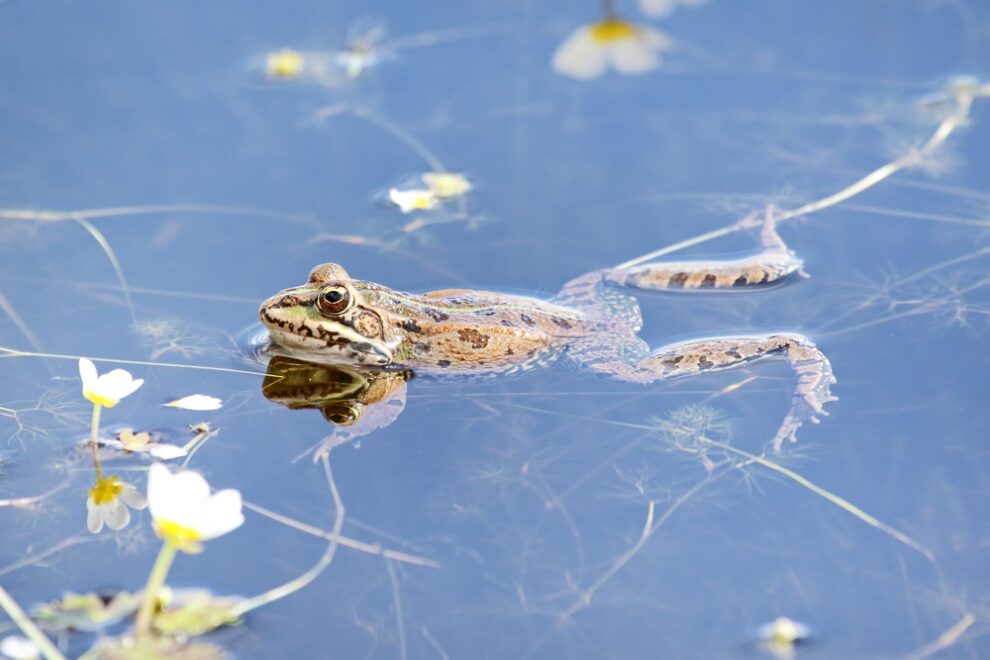
Getting started with a wildlife pond
Use some rope, string or a length of hose to lay on the ground and form a shape. Wildlife ponds can be formal in shape if you want, they just need to be shallow.
If you want a perfect circle tie some string around a bamboo cane, stick the cane in the ground where you want the middle to be, and walk around in a circle with a fixed length of string, marking the ground as you go.
In a normal fish pond the first shelf would be a spade’s depth deep at the edge, but in a wildlife pond only the middle needs to be that deep, if at all.
Remove the turves, keeping the ones from the outer edge, as these can be reused once the pond liner is down. Dig the pond to your required depth, making sure that there is a wide, shallow margin around all the edges.
Calculating pond liner size
Once the hole is dug, remeasure, and input your measurements in the Swell pond liner calculator here. All liner will fare better when used in conjunction with a proper underlay, and the thicker the liner, and the longer the guarantee, the better. Lay the liner in the hole, stretching it to remove creases as you go.
A sunny day is best for laying liner as the extra warmth makes the black liner more flexible. Adding water then helps the liner form to the shape of the hole, while you stretch and fold as you go. Replace the turf around the edges or use flat stonework or cobbles, for a natural look. Trim any excess liner with scissors, and leave.
How to fill up a wildlife pond
For authenticity, a wildlife pond can be left to fill naturally with rainwater. Too acidic for fish ponds, rainwater is naturally low in nutrients, which will help to suppress algae.
If you have to use tap water you can just ensure that any chlorine or chloramine is removed by an inline dechlorinator or a liquid dechlorinator. Fill up with tap water, leave, and the wildlife will come.
It’s fun to write a list of all the different creatures you spot in the pond as it matures. Even the insects. You’ll be surprised at just how many visitors your new pond receives, and the positive effect it can have on local wildlife.
It's a good idea to test the water once filled, just to make sure it's ok, as adverse pH may deter some species. Avoid limestone rocks, cement and anything with exposed concrete as these can all raise the pH and alkalinity.
Covering the pond bottom
If you want all traces of your manmade activity disguised, you can opt to cover the liner. Avoid garden soil as its too rich and will cause terrible algae problems. Use purpose-made aquatic soil, or lime-free playpit sand.
Neither are recommended for the base of fish ponds, but a deep layer of aquatic soil in a wildlife pond will provide rooting for marginal and moisture-loving plants as well as extra habitat for aquatic invertebrates.
To filter or not to filter a wildlife pond?
A true wildlife pond should be fish-free, as they will predate the tiny insect larvae which would go on to feed other things, and bring their own set of welfare issues, like the need for deep water and filtration.
You can add a small pump, but any pump risks harming microscopic invertebrates as they pass through it. If you have the pond bug why not enjoy the best of both worlds with a raised, filtered fish pond and a separate wildlife pond in a quieter part of the garden?
If you want moving water in your wildlife pond try covering the pond pump cage with sponge or filter floss sheets to act as a barrier to prevent aquatic invertebrates and tadpoles from being sucked in.
Planting and adding wildlife to a pond
For planting, you could be brave, make a wildlife pond, and wait for plants to come to you. In the UK, pond plants naturally colonise new water bodies by way of spreading the seeds in the wind. If you don’t have the patience then British native pond plants should be added in spring and summer.
You aren’t allowed to move wildlife like frogs and newts to and from garden ponds as they are protected, but some pond invertebrates like snails, water fleas (Daphnia,) and freshwater mussels can be purchased and added once the pond matures, helping to clear water and graze algae. Pond skaters are amazing at finding and colonising new ponds.
You can have an established wildlife pond in no time, and at very little cost.
Recommended pond plants
- Water forget me not
- Marsh marigold
- Flowering rush
- Yellow flag iris
- Water starwort
- Water mint
- Curled pondweed
- Ranunculus flammula
- Mentha aquatica
- Potamogeton crispus
- Water milfoil




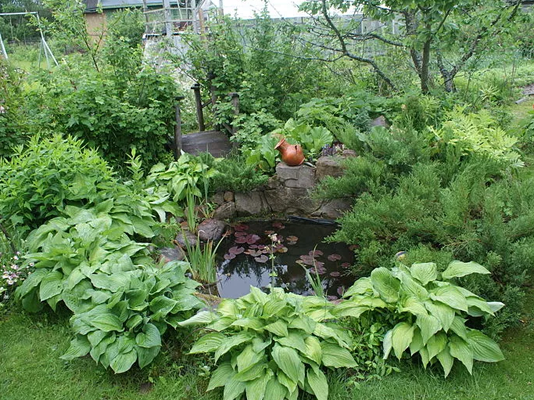
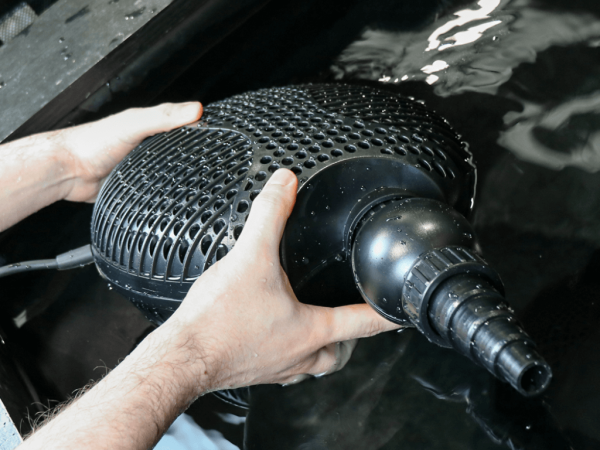
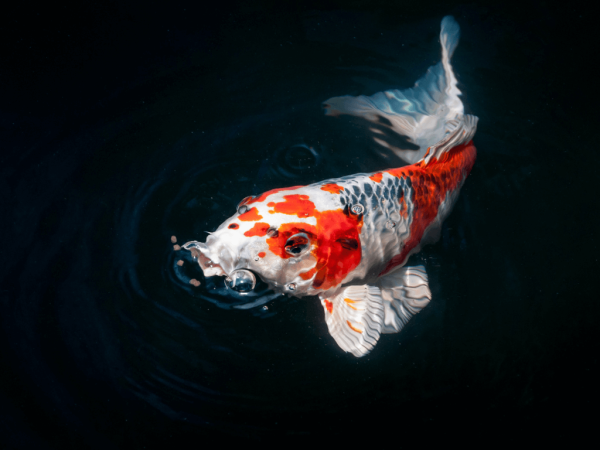
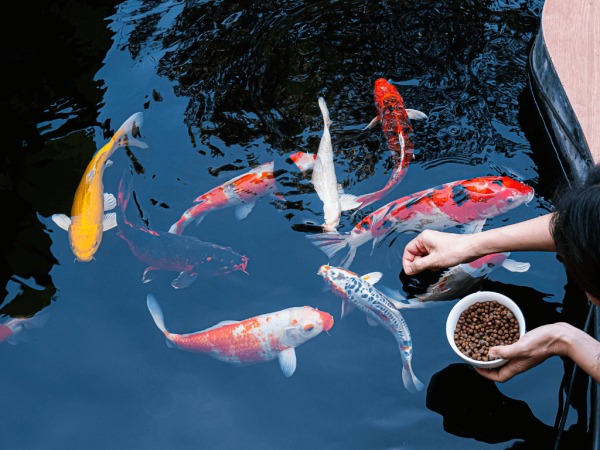
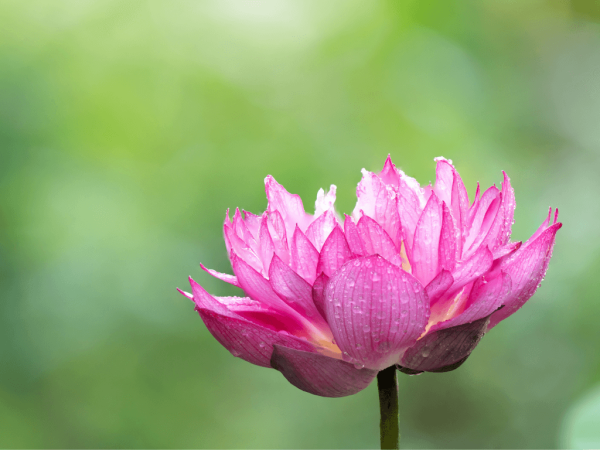
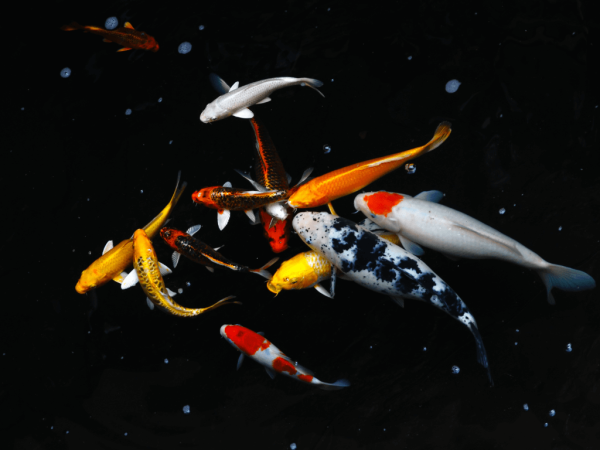
with my kindest regards
total lack of knowledge
yours hopefully
REBECCA ATKINSON